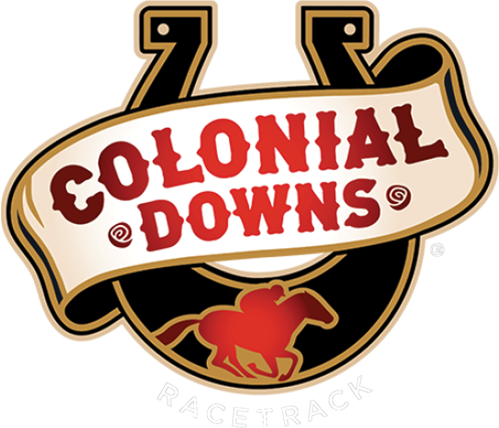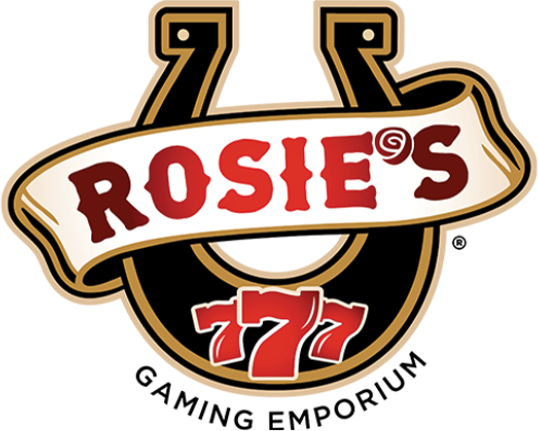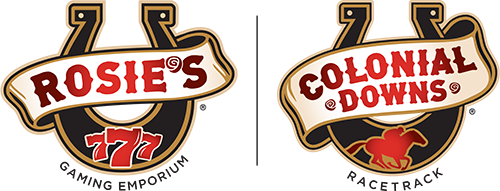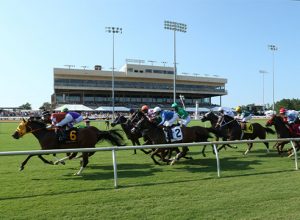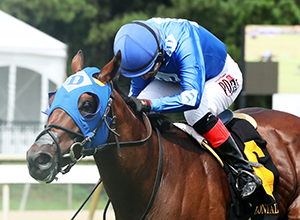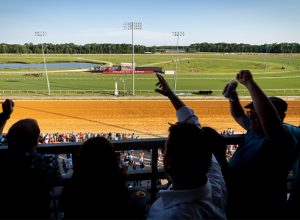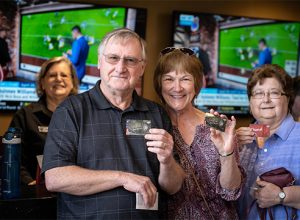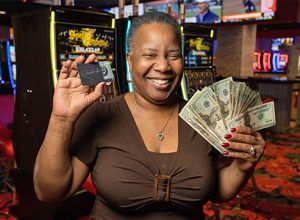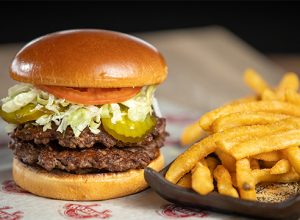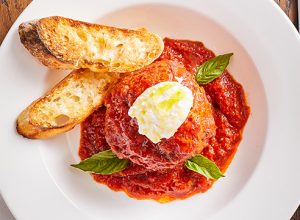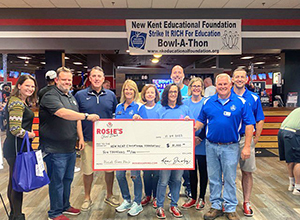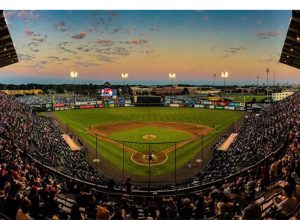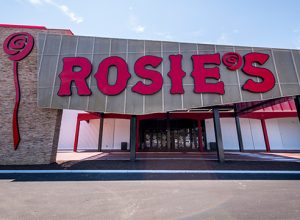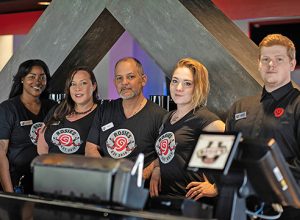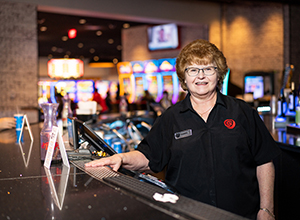Meet Virginia’s Three Horse Race Starters; Very Different Getaways, But All Have The Same Goal
Posted on February 3rd, 2021
There are three types of pari-mutuel horse races that take place in Virginia — thoroughbred/flat racing at Colonial Downs in New Kent, standardbred/harness racing at Shenandoah Downs in Woodstock, and steeplechase/jump racing at Great Meadow. And there are a dozen other venues that host non-wagering steeplechase and point-to-point events throughout the year.
A horse is a horse and a bet may be a bet, but all three types of races start in uniquely different ways that separate one from the other. Anthony “Spike” Ranno, Clarence Martin and Graham Alcock are the respective “starters” in Virginia and each has the same objective — to make sure every horse receives a fair and safe getaway in order to protect the investments of their owners, the integrity of the sport, and the bettor’s interests. But each employs a completely different starting method to reach that moment when a track announcer says, “They’re Off!”
Ranno starts the field from a stationary gate with 14 separate stalls, or chutes, that thoroughbred horses enter one by one. Ater the final horse loads in, he presses a button that simultaneously rings the starting bell and flips open the magnetic doors. Horses then burst out together and compete in the race.
Martin on the other hand sits backwards in a moving starters car — with wings on each side — traveling up to 30 miles an hour with his face nearly pressed against the rear window. As harness horses approach the moving gate, he makes sure each is in its proper post position spot on the wings before the field is released and the race begins.
Alcock employs a hybrid version of sorts for jump horses, without the benefit of a stationary or movable mechanical apparatus. When jumpers and riders approach a starting box area, they spread out left to right in post order and try to keep a forward motion during the process. When Alcock feels the field is in a fair starting position, he will drop a flag and the race begins.
Despite different methods, the goal of each starter is the same.
Ranno starts at Tampa Bay Downs from November thru May and has been the starter at Colonial Downs for the last two years. The Massachusetts native leads a team of 13 crew members who load horses safely into a stationary gate, horse by horse. His crew works early in the day and on race days, stays late. The day begins with horse schooling. Five mornings a week, they set up a starting gate in the chute from 7:00 – 9:30 AM, and help horses learn to enter and exit the very confined space.
“Preparation of horses prior to race day is critical,” said Jill Byrne, Colonial’s VP of Racing Operations. “Schooling gives young horses a chance to learn how to handle the gate and how to break out of it. This is where it all starts.”
Later in the day during the races, Ranno, his staff, and a small army of other workers move the starting gate into different positions for the various races. Each race is contested at a different distance and often, over rotating surfaces — either the 1 1/4 miles dirt oval or Colonial’s signature Secretariat Turf Course, the widest grass racing surface in the country which features both an inner and outer turf course. For turf races, his team needs to place a set of boards over the grass so the gate’s wheels can roll over them and not damage the surface while getting into position. That involves an additional 12 workers who complement the gate crew.
Colonial’s famous large and wide track surfaces can pose an occasional challenge. On July 29 last year, the third race at Colonial was scheduled to be run at 1 3/16ths miles over the outer turf course. Ranno, in his tractor, slowly backed the gate up to an opening in the outer rail while two of his team members — at the other end of the gate — directed and pulled it into onto the boards which had just been laid down. Halfway onto the turf, Ranno received a heads up. The gate was in the wrong spot. It was being set at a 1 1/8 miles distance. The boards that had just been laid down had to be taken up quickly, relocated, and placed down again in the proper spot before horses arrived.
Once the gate is set, numbers are placed above the stalls being used so the gate crew can load horses and jockeys in properly based on size of the field and program number of each horse.
In the minutes before load in begins, Ranno sits in his tractor seat and studies a program he accesses through InCompass Solutions. His goal however, is not to handicap the field. “I look at the program marks that horses have from past races around the country. Some need a handler for their head, some need one for their head and tail, some need open doors to load, and some need to be pushed in. There’s all kinds of marks and tricks we use to make the load in go smoother.”
“It’s all about teamwork,” said Ranno, who gathers his group together before each race to go over a specific game plan based on those marks. “Most of these guys have been working together for 25, even 30 years, so everyone knows what to do and how to get the job done. Nobody has to tell each other what to do. They just look at each other and know. Some of us have worked together since the ’90’s at Rockingham Park in Boston and the fair circuit in Massachusetts. Safety is the key,” he added. “Everyone has to know how to handle their horse and not get in the wrong spot at the wrong time. You try to do it as quickly as possible but you also need to take your time so you don’t make a mistake.”
Ten of Ranno’s crew members come with him annually from Tampa Bay. The other three come from Maryland, Delaware and Pennsylvania.
“Spike and his crew are horsemen first,” said Byrne. “It is a very dangerous job and they are all skilled. That’s why they are horsemen first. They understand why a horse reacts the way it does sometimes. And they have to react quickly, think fast and move fast. They need to get along with the horse. They’re trying to get a horse into an apparatus that is only three or four feet wide. As a former rider myself, it’s critical to have people at the gate that know how to get along with horses instead of fighting with them.”
Ranno, 44, grew up around the business. His mother was a trainer and his grandfather rode a pony horse at the track and also had a feed business. Ranno began working on the grounds at the Northampton Fair at the age of 22 and became a member of the gate crew there. Over the years, he tried a couple jobs away from racing but always gravitated back to the track.
“When I first began doing this, it was an adrenaline rush, getting in there and wrestling with the horses,” he said. “But then you realize you’re working with a horse to get it right and help them do good. We work the younger horses a lot in the mornings, trying to get it to where they load in nice and easy and leave and not cause any problems. It makes you feel good when someone thinks that a horse is crazy to the point they’ll never settle in and do well. Then when they do, there’s a lot pride in that. There’s no such thing as a bad horse.”
Allison DeLuca is the long time Racing Secretary at Tampa Bay Downs and will begin her third season in that position at Colonial come July. “Spike is very conscious of everything and he goes one hundred percent by the book,” she said. “It’s especially important at Colonial because there are so many ship-in horses that compete here that his crew is seeing for the first time. He is strict and has a great crew that work for him. He takes it very seriously.”
Martin is a former harness trainer who had a stable of 20 horses at one time, but when his daughter graduated high school and left for college twelve years ago, he switched sides of the track and became a starter, though he still conditions several horses.
Martins’ goal in starting a field of harness horses is the same as Ranno’s, but instead of eyeballing them at a standstill, he — along with the pacers and trotters — are in motion together for about 30 seconds while they line up behind the moving gate and wait for the word “go”. The wings of the gate then swing open, and the race begins. Horses in harness racing continue on in the respective gaits at the speed they established before the race began versus thoroughbreds, which bolt out when the chutes open.
Operating a harness starting car/gate is a two-person operation. A driver steers the car from the normal front left seat, but the starter actually controls the speed of the car traveling backwards in a sense, looking at the horses while perched in a swivel seat in back facing the car’s rear window.
“There is an element of danger to it,” said Martin. “You’ve got to be watching every horse in the race, making sure everyone is in the right spot, looking for broken equipment before we holler the word ‘go’. We have eight in a race and you got to watch every one of them and try to get them all a fair start. You got to stay alert and watch for anything that shouldn’t be happening. Sometimes it doesn’t work out that way but we try to do the best we can do.”
“A starter that has been a trainer or driver themselves is an asset because they can anticipate different situations that could arise behind the starting gate,” said Jack Remy, Presiding Judge at Shenandoah Downs. “It gives them better intuition on how drivers and horses may react during those times. This also helps them accurately inform the judges of any infractions or situations that occur during the race. They make sure horses are in correct position, that there is no interference behind the gate while taking into account the safety for horse and driver as well as the betting public’s interest of a fair start.”
Martin’s first position as a starter was at a fair in Meadville, Pennsylvania. Now, he does 21 fairs in that state. He began starting in New York three years ago and now services 11 different fairs there. And he has been the starter at Shenandoah Downs since 2017.
“My father trained and I trained,” said Martin, “But I wanted to cut back and slow up. The switch turned out to be a good gig. It’s made life easier. You’re not dependent on a horse to feed you and your family. At the end of the day, I’m still involved but instead of having 20 head, I have three, and another source of income.”
Not only is he the starter, Martin also builds and supplies his own starting gates. He is finishing his fourth gate this winter. “There’s not a lot of people who do this or are looking to get into it,” he said. “Some places don’t have their own gate so they rent mine. We’ll supply the driver and starter as part of the package. We’re very fortunate that we have good drivers everywhere we go and good equipment. We started out with some bad equipment and have upgraded, then upgraded even more.”
Unlike his thoroughbred counterpart, Martin does not work extended meets and as a result, travels extensively in season going from fair to fair. “I live in the eastern part of Pennsylvania but we have many fairs that are in the middle and western part of the state, as far as 5 1/2 hours away. Often times, I’ll leave the day before because you never want to risk not making it. This business can be a long, drawn out affair at times. You do a lot of running. I bought a new truck last spring and by the time the Shenandoah meet started (mid-September), it had 15,000 miles on it.”
With all the moving parts, literally, things can go awry on occasion. “Three years ago at Shenandoah, Billy Carter was coming to the gate and he was just flying. Everyone was on the gate already and I told him he better take a hold and slow up because we were not going that fast. You just can’t take off and leave everybody else because one guy wants to go 100 miles an hour. I hollered at him a second time and said he better slow up. But the horse kept coming, ducked, went under the gate and kept right on going past us. It wasn’t funny when it happened but now when we all look back on it, it was funny.”
“Another time,” added Martin, “We had a horse get his nose stuck in the screen. We had to have a recall and get everybody stopped. We actually had to get out of the car and push the horse’s nose back out — he was stuck right in.”
Graham Alcock wants horses to keep moving — to an extent — at the start of a steeplechase race when they arrive at the starters box. That “box” is an area defined in the grass by four cones positioned at each corner. Horses walk head to tail from outside to inside across that box until Alcock tells them to turn to face him. If they are within up to two lengths from each other at that point, he lets them go. Even though they are spread across, he wants them to keep a subtle forward motion going at the same time.
“You don’t want horses standing still because you don’t know if they’re stuck or not,” he said. “They might be standing still, and the rider might be happy with them standing still, but you’re not going to know until you ask them to move forward. Being a former rider, a horse moving forward is always the best thing.”
Alcock, 58, is a former steeplechase rider who many years ago, competed nine seasons on the jump circuit that included the Virginia meets. After giving that up, he became a flat track horse trainer and then a farm manager in Kentucky — both of which lasted several years — but neither turned out to be long-term. Alcock relocated back to Virginia near Middleburg, took up equine dentistry and has worked on horse’s teeth since for the last 24 years. He has also been a starter on the National Steeplechase Association (NSA) circuit for the last eight years after starting out doing point-to-points.
He was asked about transitioning from being a participant in the sport, to an official. “If you’ve ridden, it really helps to have an understanding of what the jockeys go through, and to work with them and not fuss around,” Alcock said. “They are trying to do the best they can and as a starter, you need to understand that. Sometimes, they push a little and you need to say, ‘back off a bit’. You need to make it a team effort, and not just you as the starter being the boss.”
Ranno gets one shot to start a field of thoroughbreds. On rare occasions, Martin will have a recall and try a second time with harness horses due to broken equipment or other factors. Alcock could do the same with jumpers, but he prefers not to.
“I like to get it right the first time,” he said. “Usually if the first try is terrible, it’s not going to get better the second or third time. Things don’t improve when you keep coming back. Jockeys get more anxious. Horses get more anxious. If you’re walking a horse across and all of a sudden they take off early going 30 miles an hour and prepare to jump, and you end up bringing him back for a restart, it doesn’t work out. The horse is wound up so sending him out again isn’t going to make it better. You need to be lenient,” Alcock added. “I mess up every now and then. Every now and again we leave one. Every now and again we don’t make everyone happy. The biggest thing is to work as a team with the jockeys, talk to them and understand them.”
“Graham has such a great relationship with the riders,” said NSA President Dr. Al Griffin. “He was one of them. It’s not like they load in a starting gate like flat racing. Graham has to orchestrate the start, getting them lined up and all in a position of equal advantage before dropping the flag. Getting the start right is an art, and Graham is a Master.”
Like in flat and harness racing, things don’t always go as planned. “The funniest incident I’ve been part of happened at Colonial Downs. I lined everybody up, was happy with the start, dropped the flag, and nobody went. Nobody wanted to jump off. I picked up my flags, started walking off the course and said, “Somebody’s got to go”. As I walked away, I heard the announcer say, “They’re off”. And now, I’m not sure if they’re off or not. I did my job and was happy with the way I left it. The jockeys all got a warning from the steward, who said a start is a start and they need to make it look like a race.”
Of all the tracks Alcock has started at, Great Meadow in The Plains — home of the Virginia Gold Cup Races — holds a special place. “I like all the tracks I’ve worked at, but that one is most special. When you stand there by the finish line and look across the course, it’s just unbelievable. It’s pretty special.”
All three starters will be back at work in Virginia in 2021. Ranno will start races at Colonial Downs in New Kent every Monday, Tuesday and Wednesday from July 19 – September 1, including the Virginia Derby card on August 31. Martin will ride backwards around the harness dirt oval in Woodstock at the Shenandoah County Fair Races and at the Shenandoah Downs pari-mutuel meet this fall. And Alcock will start the Virginia Gold Cup on May 29, the International Gold Cup on October 23 and other meets NSA meets in Middleburg, Charlottesville and Montpelier Station.

